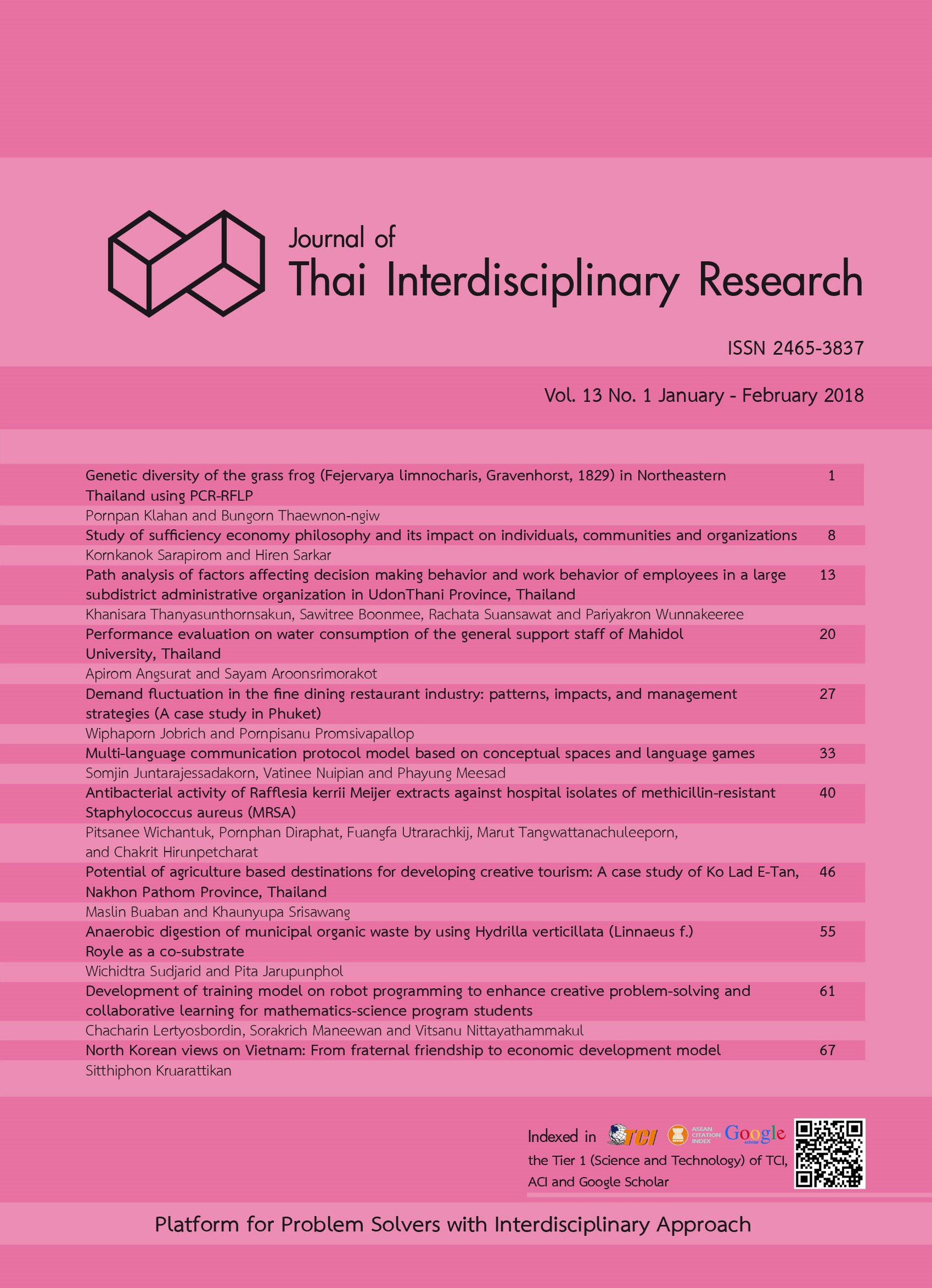Genetic diversity of the grass frog (Fejervarya limnocharis, Gravenhorst, 1829) in northeastern Thailand using PCR-RFLP
Main Article Content
Abstract
The genetic diversity of the grass frog (Fejervarya limnocharis) in northeastern Thailand was studied by using PCR-RFLP technique. The total of 120 specimens, consisting of 106 females and 14 males, were collected from 12 provinces. Genomic DNA was extracted from Gastrocnemius muscle of specimens with CTAB-Phenol: Chloroform Proteinase K method. Appropriate primers were screened for PCR and COI primer was selected. The PCR product of COI primers showed 710 bp in all the samples. These PCR products were digested with Alu I, Dde I and Taq I restriction enzymes and found patterns of single haplotypes as 2, 1 and 1 respectively. The composite haplotypes were constructed from single haplotypes of 3 enzymes and showed all 2 patterns as AAA and BAA. The highest percentages of composite haplotypes patterns were 98.33 and 1.67 respectively. The UPGMA dendrogram of restriction haplotype was constructed using NTSYS PC version 2.1p. The polymorphism of Alu I, Dde I and Taq I digested COI products were evaluated and divided into 2 groups: group 1 divided clearly from the F. limnocharis, Group 2 consisted of all F. limnocharis which can be divided into 2 subgroups. The similarity coefficient between 2 subgroups exhibited approximately 77.5 percentages. From this study F. limnocharis of UD and MH showed clearly genetic difference, maybe a new species or not. In future study, we need to collect more samples in this area.


